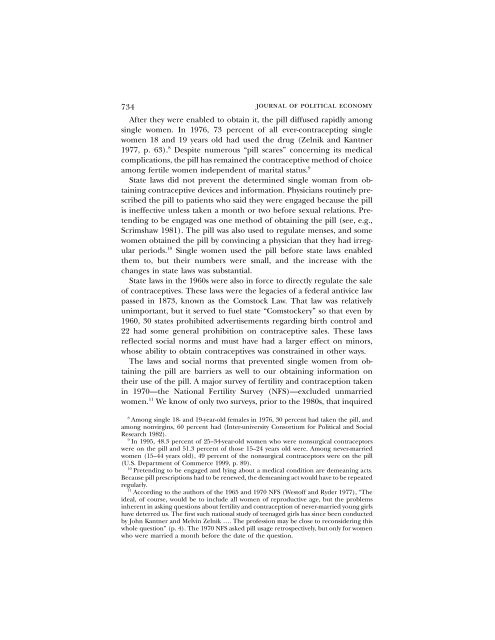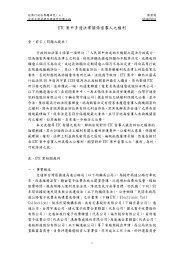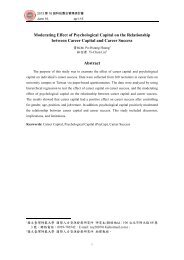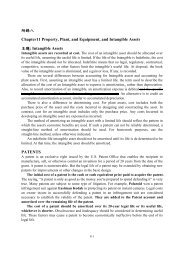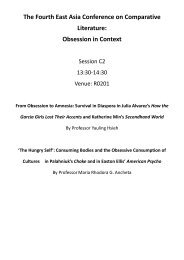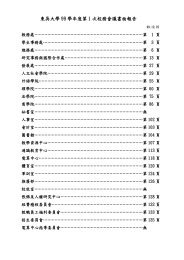The Power of the Pill: Oral Contraceptives and Women's ... - Mail
The Power of the Pill: Oral Contraceptives and Women's ... - Mail
The Power of the Pill: Oral Contraceptives and Women's ... - Mail
Create successful ePaper yourself
Turn your PDF publications into a flip-book with our unique Google optimized e-Paper software.
734 journal <strong>of</strong> political economy<br />
After <strong>the</strong>y were enabled to obtain it, <strong>the</strong> pill diffused rapidly among<br />
single women. In 1976, 73 percent <strong>of</strong> all ever-contracepting single<br />
women 18 <strong>and</strong> 19 years old had used <strong>the</strong> drug (Zelnik <strong>and</strong> Kantner<br />
1977, p. 63). 8 Despite numerous “pill scares” concerning its medical<br />
complications, <strong>the</strong> pill has remained <strong>the</strong> contraceptive method <strong>of</strong> choice<br />
among fertile women independent <strong>of</strong> marital status. 9<br />
State laws did not prevent <strong>the</strong> determined single woman from obtaining<br />
contraceptive devices <strong>and</strong> information. Physicians routinely prescribed<br />
<strong>the</strong> pill to patients who said <strong>the</strong>y were engaged because <strong>the</strong> pill<br />
is ineffective unless taken a month or two before sexual relations. Pretending<br />
to be engaged was one method <strong>of</strong> obtaining <strong>the</strong> pill (see, e.g.,<br />
Scrimshaw 1981). <strong>The</strong> pill was also used to regulate menses, <strong>and</strong> some<br />
women obtained <strong>the</strong> pill by convincing a physician that <strong>the</strong>y had irregular<br />
periods. 10 Single women used <strong>the</strong> pill before state laws enabled<br />
<strong>the</strong>m to, but <strong>the</strong>ir numbers were small, <strong>and</strong> <strong>the</strong> increase with <strong>the</strong><br />
changes in state laws was substantial.<br />
State laws in <strong>the</strong> 1960s were also in force to directly regulate <strong>the</strong> sale<br />
<strong>of</strong> contraceptives. <strong>The</strong>se laws were <strong>the</strong> legacies <strong>of</strong> a federal antivice law<br />
passed in 1873, known as <strong>the</strong> Comstock Law. That law was relatively<br />
unimportant, but it served to fuel state “Comstockery” so that even by<br />
1960, 30 states prohibited advertisements regarding birth control <strong>and</strong><br />
22 had some general prohibition on contraceptive sales. <strong>The</strong>se laws<br />
reflected social norms <strong>and</strong> must have had a larger effect on minors,<br />
whose ability to obtain contraceptives was constrained in o<strong>the</strong>r ways.<br />
<strong>The</strong> laws <strong>and</strong> social norms that prevented single women from obtaining<br />
<strong>the</strong> pill are barriers as well to our obtaining information on<br />
<strong>the</strong>ir use <strong>of</strong> <strong>the</strong> pill. A major survey <strong>of</strong> fertility <strong>and</strong> contraception taken<br />
in 1970—<strong>the</strong> National Fertility Survey (NFS)—excluded unmarried<br />
women. 11 We know <strong>of</strong> only two surveys, prior to <strong>the</strong> 1980s, that inquired<br />
8<br />
Among single 18- <strong>and</strong> 19-year-old females in 1976, 30 percent had taken <strong>the</strong> pill, <strong>and</strong><br />
among nonvirgins, 60 percent had (Inter-university Consortium for Political <strong>and</strong> Social<br />
Research 1982).<br />
9<br />
In 1995, 48.3 percent <strong>of</strong> 25–34-year-old women who were nonsurgical contraceptors<br />
were on <strong>the</strong> pill <strong>and</strong> 51.3 percent <strong>of</strong> those 15–24 years old were. Among never-married<br />
women (15–44 years old), 49 percent <strong>of</strong> <strong>the</strong> nonsurgical contraceptors were on <strong>the</strong> pill<br />
(U.S. Department <strong>of</strong> Commerce 1999, p. 89).<br />
10<br />
Pretending to be engaged <strong>and</strong> lying about a medical condition are demeaning acts.<br />
Because pill prescriptions had to be renewed, <strong>the</strong> demeaning act would have to be repeated<br />
regularly.<br />
11<br />
According to <strong>the</strong> authors <strong>of</strong> <strong>the</strong> 1965 <strong>and</strong> 1970 NFS (West<strong>of</strong>f <strong>and</strong> Ryder 1977), “<strong>The</strong><br />
ideal, <strong>of</strong> course, would be to include all women <strong>of</strong> reproductive age, but <strong>the</strong> problems<br />
inherent in asking questions about fertility <strong>and</strong> contraception <strong>of</strong> never-married young girls<br />
have deterred us. <strong>The</strong> first such national study <strong>of</strong> teenaged girls has since been conducted<br />
by John Kantner <strong>and</strong> Melvin Zelnik …. <strong>The</strong> pr<strong>of</strong>ession may be close to reconsidering this<br />
whole question” (p. 4). <strong>The</strong> 1970 NFS asked pill usage retrospectively, but only for women<br />
who were married a month before <strong>the</strong> date <strong>of</strong> <strong>the</strong> question.


